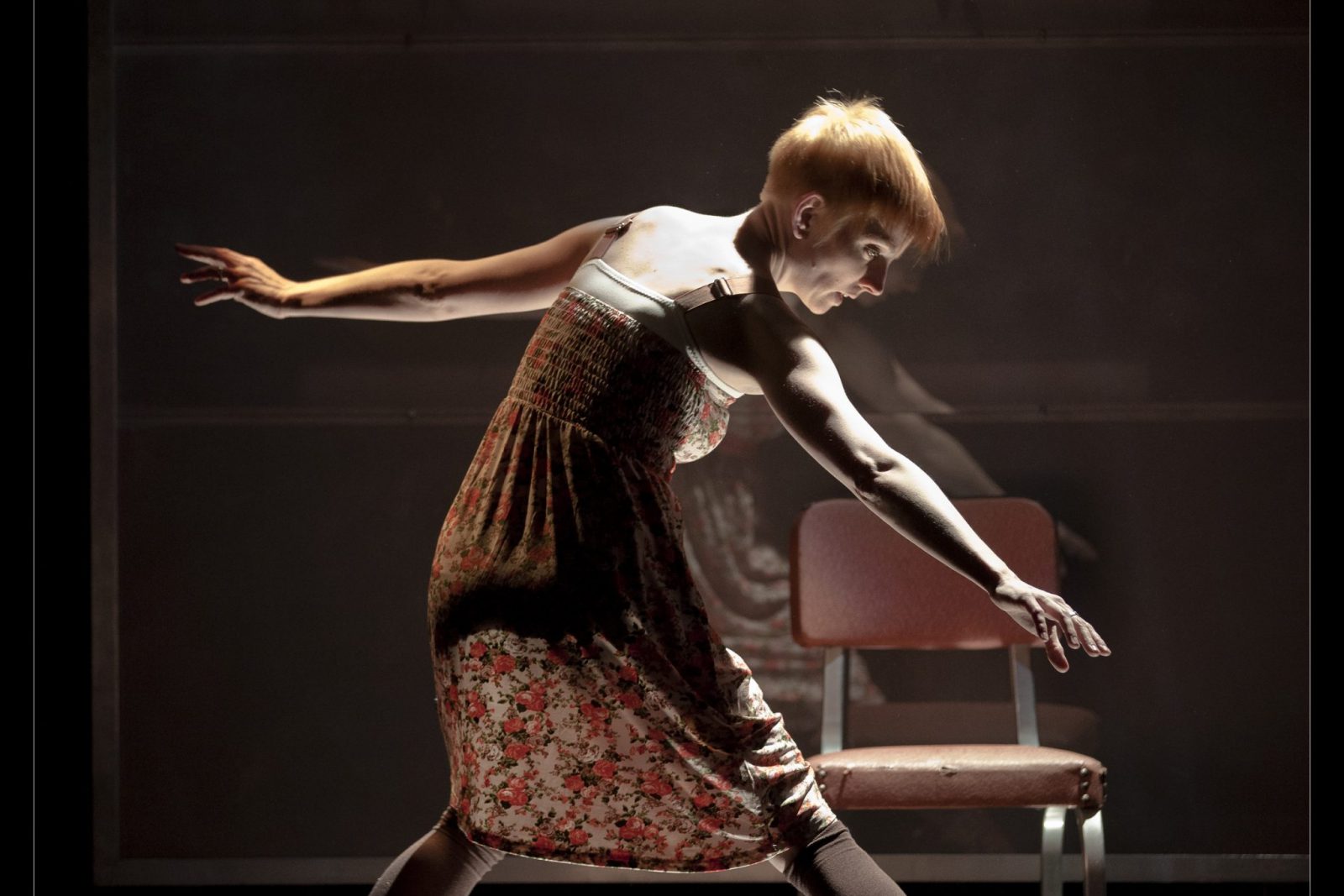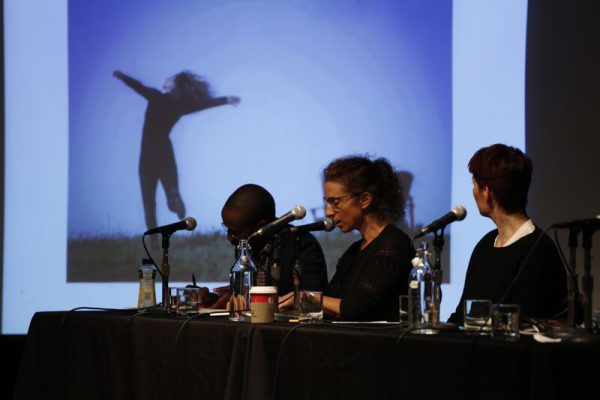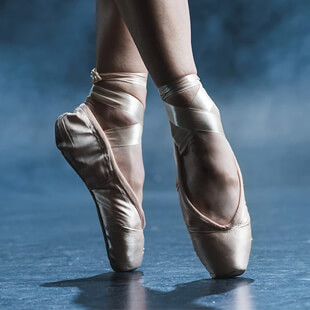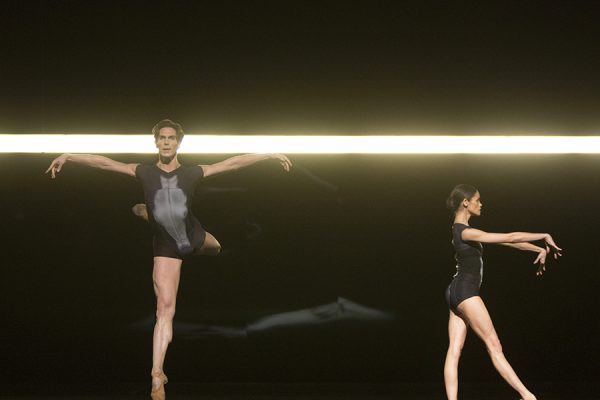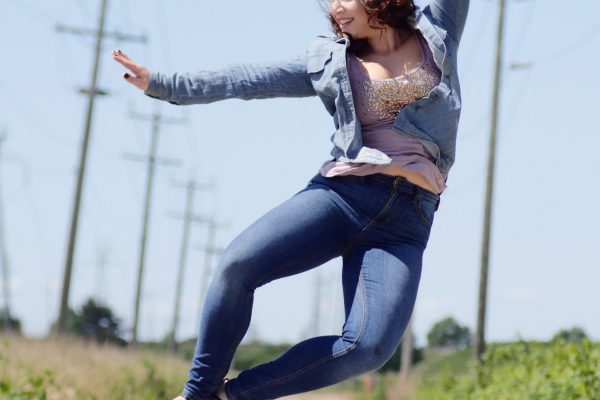Dance works that transport you completely into someone else’s world are rare. Heidi Strauss and her creative team have devised just such an event with “still here”, part of the Factory Theatre’s recent Performance Spring Festival.
Of course, it helps to have the perfect setting. In this case it is the smallish Studio Theatre at the Factory (where Strauss is artist-in-residence) with an exquisitely detailed set, designed by Julie Fox. Consisting of an over-sized table with a reflective surface and a projection screen backdrop, the set is ingeniously self-contained and clearly designed to be located just about anywhere. But what’s really remarkable is what Stauss and video designer Jeremy Mimnagh do with that table and that backdrop to make something private, intimate and, arguably, ordinary into something that feels like magic.
The piece begins almost casually. We have seen Strauss sitting behind the screen and she just moves round front after flipping a switch or two. It is clear from this that she is controlling many of the music and lighting cues herself. On our side of the screen a paper backdrop is printed to look like a wall in a typical Toronto house, complete with window, tops of radiators showing and tree branches visible just outside. There are birds singing. We are in a room with a performer.
Not much really happens in this landscape of a lost soul. Strauss’ character seems to be trapped somehow, killing time, waiting for something or someone, a prisoner of her own choosing perhaps but some kind of prisoner nonetheless. Restlessly using her entire body to explore her environment, Strauss’ movements are alternately twitchy, athletic and delicate. Sometimes the details of her gestural language are so subtle that I’m not sure the piece would even read in a larger space. Is that a weakness? Not really in the theatrical world we are visiting here. When Strauss does break out into actual dance moves, there is a broken doll quality to them; it’s a bit spooky. Her androgyny is riveting; her face attracts light like an iconic movie star. Her gaze casts lazily out over the watching audience; she doesn’t quite look at you but she doesn’t not look at you either. The dances that make up this silent narrative are precise but tossed off with a casual quality that somehow doesn’t undermine that precision. And while it is easy to describe the physical environment in which these dances take place, it is much more challenging to describe the dancing itself and the emotional subtext it suggests.
At one point Strauss pulls out a pen and a piece of paper and starts writing a letter: “… I took it for granted that I would always know how to find you …” It is one of the few narrative clues amid all this abstraction, and it is a way in.
Another clue drops when Strauss changes into a sundress and boots and dances briefly as if at a club or house party. She is clearly a nerd, awkward, trying hard to be cool and stylish, putting huge effort into the dance. It’s a reminiscence of the most particular kind.
Yet another memorable piece of business occurs under the table, which is rigged with hidden lights. Strauss carefully positions a tiny houseplant under a pin spot. It seems like a pretty pointed metaphorical moment. But what exactly is she nurturing or highlighting besides a plant? A memory? Love? It prompts me to finally sneak a peek at the program notes:
“The solo you are seeing is an exploration of aloneness and recovery, of moving on, of missing what is no longer there, of finding resilience — feeling what slips away, what endures and what outlasts us.” All right then.
Eventually, Strauss succumbs to her twitchy ennui and confinement and “opens” the window of her cell by tearing through the paper backdrop to find … the projection screen. She tidily folds the paper and stores it on top of a pile of previously folded papers (the accumulated backdrops from a week of performances perhaps?) and the screen is used from here on in to host one gorgeous projection after another.
Because we are in a small space, with everything scaled down and our focus contained, our senses are heightened. The performer and the viewer essentially inhabit the same physical space. Everything becomes rather micro, including our moments of comprehension and connection. Even the smaller screen — a tiny television perched upon a shelf high up on the large projection screen/wall — displays white noise or tiny images with tremendous resolution. It naturally draws our gaze and compresses it. So when the large screen/wall explodes with dynamic imagery near the end of the piece, the effect is proportionately overwhelming.
But this shift from miniature to monumental only happens the one time. If I have a criticism of “still here” it’s that the specifics of the production and the minute attention paid to them flattens any relativity between all of the values on display. For the most part a projection takes on the same importance as a pointing finger or as a letter being read aloud as it is being written. The sum total may be hypnotic but it is also slightly monotone.
Nonetheless “still here” is mesmerizingly beautiful. The production values are some of the best I have seen at a low-budget local dance show. And Strauss is quite simply a treasure — smart, original and increasingly literate in the nuances of theatrical magicianship.
Tagged: Contemporary, Performance, ON , Toronto
